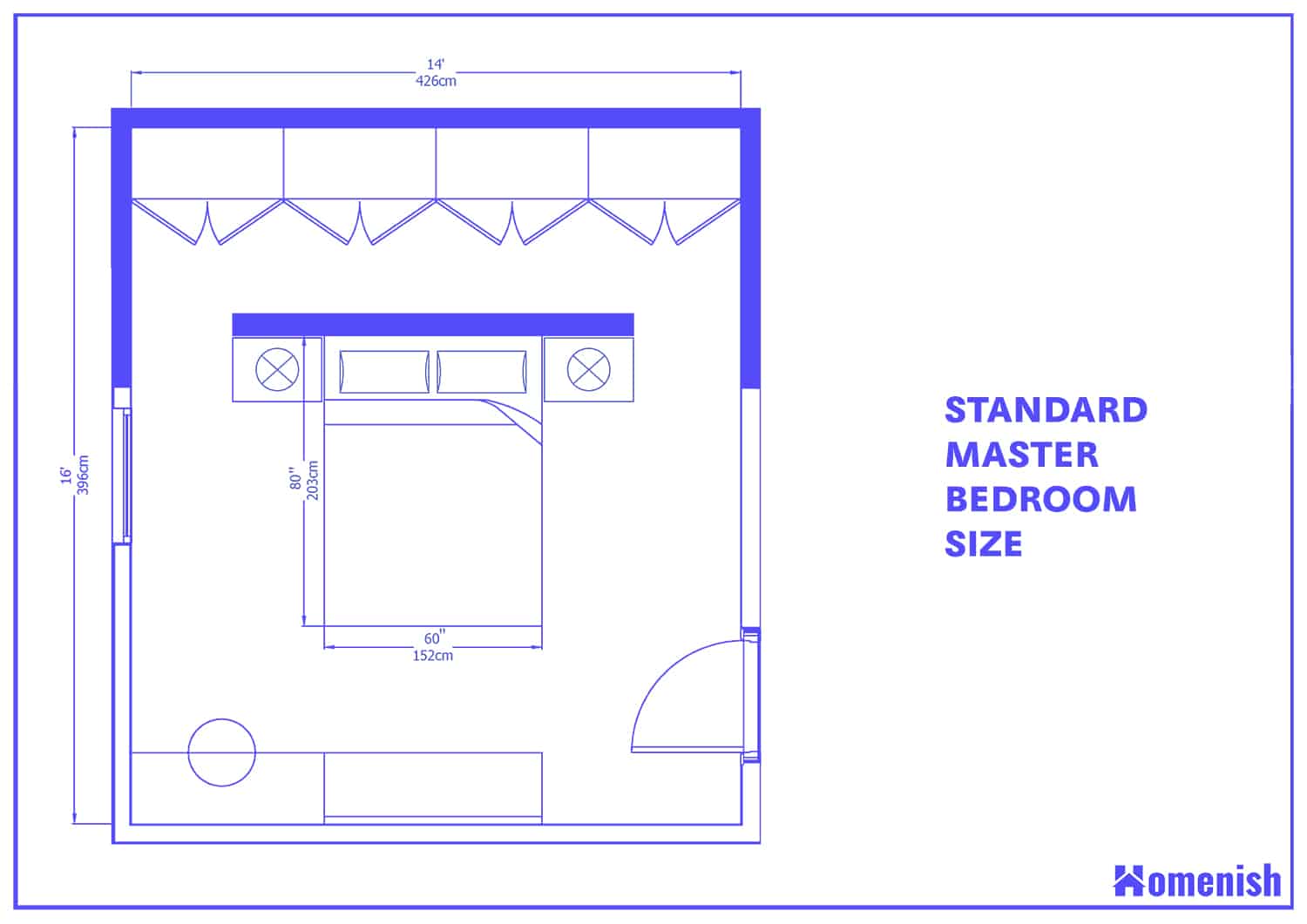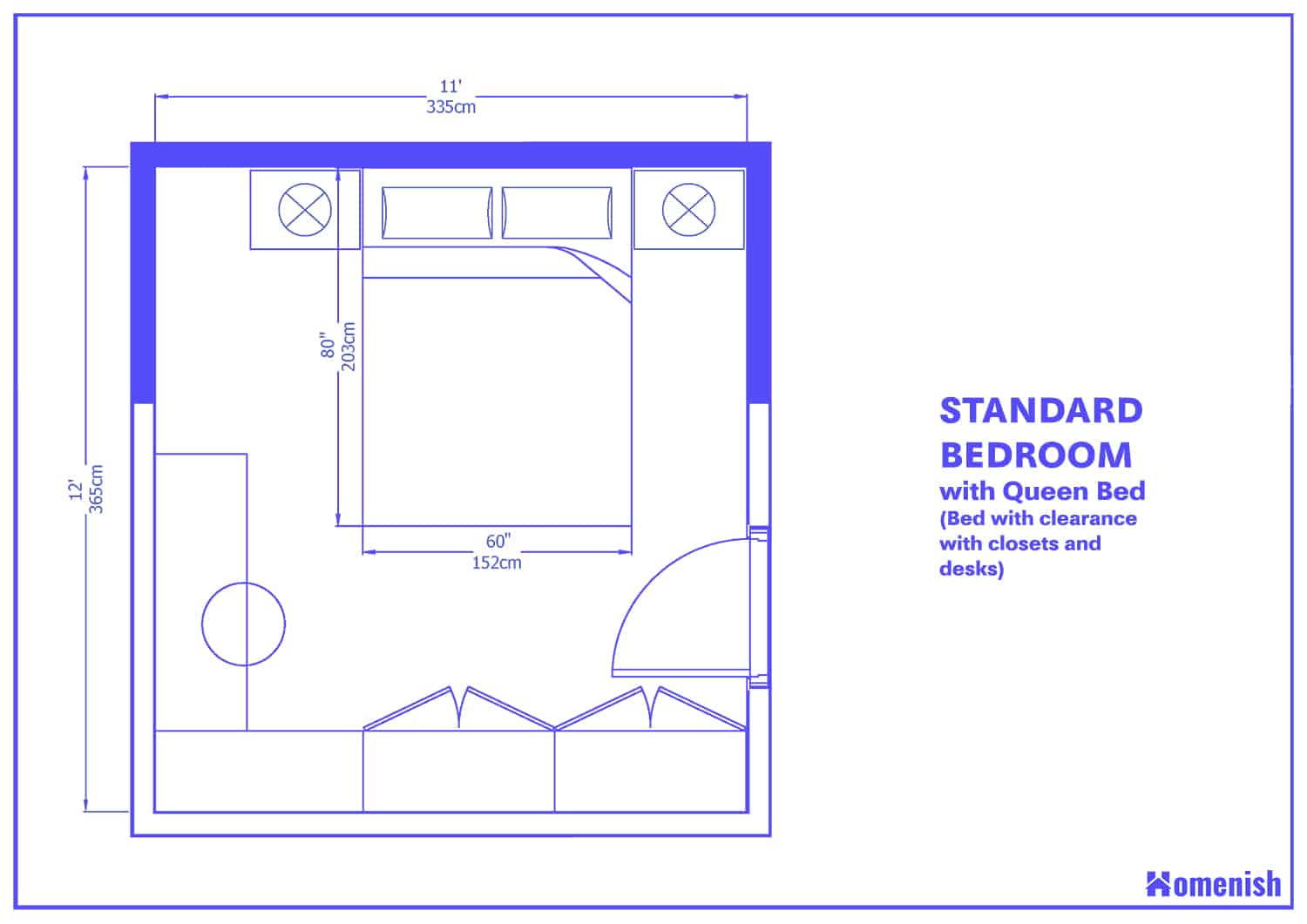Understanding Modern Bedroom Size Trends
The size of a bedroom is a crucial aspect of home design, influencing not only functionality but also overall comfort and well-being. In recent years, the modern home has witnessed a significant shift in bedroom size preferences, driven by evolving lifestyles and architectural trends. This shift reflects a greater emphasis on minimalist design, open-plan living, and the desire for a more balanced and spacious home environment.
Modern Bedroom Sizes Compared to Previous Decades
Modern bedrooms often deviate from the spacious dimensions of previous decades. The trend towards smaller bedrooms is particularly noticeable in urban areas, where space is a premium. While the average bedroom size in the past might have been around 12-15 square meters, modern bedrooms are often designed with a smaller footprint, ranging from 9-12 square meters. This reduction in size can be attributed to several factors, including:
- Increasing Urbanization: The growing concentration of populations in urban centers has led to a rise in apartment living, where space is at a premium. Smaller bedrooms are often a necessity in these environments.
- Shifting Lifestyle Preferences: Modern lifestyles are characterized by a focus on minimalism and simplicity. Smaller bedrooms can contribute to this aesthetic by creating a sense of order and reducing clutter.
- Open-Plan Living: The popularity of open-plan living concepts has led to a redistribution of space within homes. Bedrooms may be smaller in some cases to accommodate larger living and dining areas.
Factors Influencing Optimal Bedroom Size
The optimal bedroom size for a modern home is not a one-size-fits-all proposition. Several factors come into play, including:
- Individual Needs and Preferences: Personal preferences and lifestyle choices play a significant role. Individuals who value privacy and a spacious retreat may prefer larger bedrooms, while those who prioritize a minimalist aesthetic and functionality may be content with a smaller space.
- Home Size and Layout: The overall size of the home and its layout also influence bedroom dimensions. In smaller homes, bedrooms may need to be more compact to ensure sufficient space for other living areas.
- Furniture Requirements: The type and quantity of furniture required for the bedroom should be considered. A bedroom with a king-size bed, a large wardrobe, and a dressing table will need more space than a room with a smaller bed and minimal furniture.
- Natural Light and Ventilation: Adequate natural light and ventilation are essential for a comfortable bedroom. Larger windows can provide more natural light, but they may also require a slightly larger room to accommodate them.
Factors Influencing Bedroom Size: Modern Master Bedroom Size

The size of a master bedroom is influenced by a complex interplay of factors, including location, home size, personal preferences, and functional requirements. Understanding these factors helps homeowners and builders make informed decisions about bedroom dimensions.
Geographic Location and Housing Market
The typical size of master bedrooms can vary significantly depending on geographic location and the prevailing housing market. In urban areas with high property values and limited space, master bedrooms may be smaller compared to suburban or rural locations where land is more readily available. For example, a master bedroom in New York City might be around 120 square feet, while a similar bedroom in a suburb of Denver could be closer to 200 square feet.
- Urban Areas: High property prices often lead to smaller living spaces, including bedrooms.
- Suburban and Rural Areas: Larger homes and more affordable land allow for larger bedrooms.
- Regional Preferences: Some regions may have cultural preferences for larger or smaller bedrooms.
Relationship Between Bedroom Size and Overall Home Size
There is a clear correlation between bedroom size and the overall size of the house. Larger homes generally have larger bedrooms, while smaller homes tend to have smaller bedrooms. This relationship is influenced by factors such as the number of bedrooms, the intended use of the house (e.g., single-family residence, multi-family dwelling), and local building codes. For instance, a 3,000 square foot home might have a master bedroom around 250 square feet, while a 1,500 square foot home might have a master bedroom closer to 150 square feet.
Impact of Personal Lifestyle and Family Size
Individual preferences and family size play a significant role in determining desired bedroom dimensions. Couples without children may prioritize a spacious and luxurious master bedroom, while families with young children may prefer a larger bedroom to accommodate furniture like cribs and changing tables.
- Couples: May prioritize a larger bedroom for a king-size bed, a sitting area, or a walk-in closet.
- Families: Need space for multiple beds, storage, and play areas.
- Individuals: May prefer a smaller bedroom that is cozy and efficient.
Functionality and Storage Needs
Beyond aesthetic considerations, the functionality of the bedroom and its storage needs also impact size. A bedroom designed for relaxation and sleep might require minimal storage space, while a bedroom used for work or hobbies may require additional storage for office supplies, equipment, or clothing.
- Storage: A walk-in closet, built-in shelving, or drawers are essential for organizing belongings.
- Work Space: A desk, chair, and storage for work-related items might be necessary.
- Hobbies: Space for hobbies, such as reading, crafting, or playing musical instruments, may be required.
Designing a Modern Master Bedroom

Designing a modern master bedroom requires careful consideration of layout, furniture selection, and lighting to create a space that is both stylish and functional. This section explores key elements of modern bedroom design, emphasizing the creation of a relaxing and comfortable ambiance.
Modern Master Bedroom Layout
A well-designed layout maximizes space and enhances the overall aesthetic of the bedroom. Consider the following aspects when planning your layout:
- Placement of the Bed: The bed is the focal point of the bedroom, and its placement should be strategic. Consider positioning it against a wall, ideally with a headboard that adds visual interest.
- Nightstands: Nightstands provide convenient storage for books, lamps, and other essentials. Place them symmetrically on either side of the bed, ensuring they are within easy reach.
- Dresser or Vanity: A dresser or vanity offers storage for clothing and accessories. Place it in a location that allows for ample space to open drawers and access contents.
- Seating Area: A seating area adds functionality and visual appeal. Consider a comfortable armchair or a small sofa positioned near a window or a reading nook.
- Flow and Traffic Patterns: Ensure easy movement throughout the room by considering the flow of traffic. Avoid placing furniture in a way that obstructs walkways or creates a cluttered feel.
Creating a Relaxing Ambiance, Modern master bedroom size
A modern bedroom should be a sanctuary, promoting relaxation and tranquility. Here are some tips for creating a soothing ambiance:
- Color Palette: Opt for a neutral color palette, using calming hues such as gray, beige, or soft blues. These colors create a sense of peace and serenity.
- Natural Light: Maximize natural light by utilizing large windows. Curtains or blinds can provide privacy while allowing ample light to filter in.
- Artificial Lighting: Use a combination of ambient, task, and accent lighting. Ambient lighting provides overall illumination, task lighting is useful for reading or getting ready, and accent lighting highlights specific features.
- Soft Textures: Incorporate soft textures, such as plush rugs, cozy blankets, and velvet pillows. These elements add comfort and warmth to the room.
- Minimalist Decor: Modern design emphasizes simplicity and clean lines. Avoid clutter and opt for a few well-chosen pieces of decor.
Essential Furniture Pieces for a Modern Bedroom
A functional and stylish modern bedroom requires a carefully curated selection of furniture. Here are some essential pieces:
- Bed Frame: Choose a bed frame with a sleek and modern design. Consider a platform bed for a minimalist aesthetic.
- Mattress: Invest in a high-quality mattress that provides comfort and support. Consider a memory foam or hybrid mattress for optimal sleep.
- Nightstands: Select nightstands with simple lines and practical storage. Consider nightstands with drawers or shelves.
- Dresser or Vanity: Choose a dresser or vanity with ample storage space. Consider a piece with a mirror and integrated lighting.
- Seating: A comfortable armchair or a small sofa provides a place to relax and unwind. Consider a piece with a modern design and neutral upholstery.
- Storage: Additional storage solutions, such as a chest of drawers or a wardrobe, can help to keep the bedroom organized. Choose pieces that complement the overall style.
